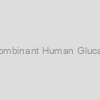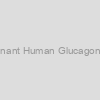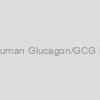Accumulation and deposition of amyloid beta peptide (Abeta) within the mind causes neuronal apoptosis and finally results in Alzheimer’s illness (AD). A therapeutic goal for AD is to dam the cascade response induced by Abeta. It has been demonstrated that glucagon-like peptide-1 (GLP-1), which is an endogenous insulinotropic peptide secreted from the intestine, binds to its receptor within the mind and possesses neuroprotective results.
Utilizing site-directed mutagenesis and gene recombination strategies, we generated a mutated recombinant human glucagon-like peptide-1 (mGLP-1) which has longer half-life as in contrast with native GLP-1. This current work goals to look at whether or not mGLP-1 attenuates Abeta(1-42)-mediated cytotoxicity in SH-SY5Y cells and to discover the attainable mechanisms. Our information point out that>> or = 0.02 ng/ml of mGLP-1 facilitated cell proliferation and 0.1 ng/ml and 0.5 ng/ml of mGLP-1 rescued SH-SY5Y cells from Abeta(1-42)-induced apoptosis.
Furthermore, Abeta(1-42) remedy dramatically stimulated the discharge of Ca(2+) from inside calcium shops in SH-SY5Y cells, whereas mGLP-1 helped to take care of the intracellular Ca(2+) homeostasis. Abeta(1-42) additionally considerably elevated the expression degree of TP53 and Bax genes that are concerned in apoptotic pathways, and mGLP-1 decreased Abeta(1-42)-induced up-regulation of TP53 and Bax.
Since mGLP-1 remedy elevated cytosolic cAMP focus in SH-SY5Y cells, we postulate that mGLP-1 could exert its affect through binding to GLP-1 receptors in SH-SY5Y cells and stimulating the manufacturing of cAMP. These outcomes recommend that mGLP-1 exhibited neuronal safety properties, and will probably be a novel therapeutic agent for intervention in Alzheimer’s illness.
Recombinant expression, in vitro refolding, and biophysical characterization of the human glucagon-like peptide-1 receptor.
Activation of the glucagon-like peptide-1 receptor (GLP-1R) upon ligand binding results in the discharge of insulin from pancreatic cells. This strictly glucose-dependent course of renders the receptor and its ligands helpful within the remedy of sort II diabetes mellitus. To allow a biophysical characterization in vitro, we expressed the human full-length GLP-1R within the cytosol of Escherichia coli as inclusion our bodies.
After purification, refolding of the SDS-solubilized receptor was achieved by the trade of SDS towards the detergent Brij78 utilizing a synthetic chaperone system. Far-UV round dichroism spectroscopic research revealed that the receptor adopts a attribute alpha-helical construction in Brij78 micelles. Ligand binding of the renatured protein was quantified by fluorescence quenching and floor plasmon resonance spectroscopy.
Within the presence of Brij micelles, the refolded receptor binds the agonist exendin-Four with an obvious dissociation fixed of roughly 100 nM in a reversible one-step mechanism. To exhibit that the detected ligand binding exercise isn’t solely attributable to an autonomously useful N-terminal area (nGLP-1R) but in addition attributable to extra contacts with the juxtamembrane half, we individually expressed and refolded the extracellular area counting on equivalent protocols established for the full-length GLP-1R.
In help of the urged multidomain binding mode, the nGLP-1R binds exendin-Four with a decrease affinity (Ok(app) within the micromolar vary) and a unique kinetic mechanism. The decrease ligand affinity of the nGLP-1R outcomes completely from a decreased kinetic stability of the receptor-ligand advanced, dissociation of which is roughly 40-fold quicker within the case of the nGLP-1R in comparison with the full-length GLP-1R.
In abstract, a framework was developed to supply useful human full-length GLP-1R by recombinant expression in E. coli as a prerequisite for eventual construction willpower and a rigorous biophysical characterization together with protein variants.
| Rat Cholesterol ELISA ELISA | |||
| E01A11128 | |||
| Goat Cholesterol ELISA ELISA | |||
| E01A46041 | |||
| Sheep Cholesterol ELISA ELISA | |||
| E01A98335 | |||
Results of low-dose recombinant human insulin-like development factor-I on insulin sensitivity, development hormone and glucagon ranges in younger adults with insulin-dependent diabetes mellitus.
Regardless of current curiosity within the therapeutic potential of recombinant human insulin-like development factor-I (rhIGF-I) within the remedy of diabetes mellitus, its mechanism of motion remains to be not outlined. We’ve studied the results of low-dose bolus subcutaneous rhIGF-I (40 microg/kg and 20 microg/kg) on insulin sensitivity, development hormone (GH) and glucagon ranges in seven younger adults with insulin-dependent diabetes mellitus (IDDM) utilizing a randomized double-blind placebo-controlled crossover research design.
Every was subjected to a euglycemic clamp (5 mmol/L) protocol consisting of a variable-rate insulin infusion clamp (6:00 PM to eight:00 AM) adopted by a two-dose hyperinsulinemic clamp (insulin infusion of 0.75 mU x kg(-1) x min(-1) from Eight to 10 AM and 1.5 mU x kg(-1) x min(-1) from 10 AM to 12 midday) incorporating [6,6 2H2]glucose tracer for willpower of glucose manufacturing/utilization charges.
Following rhIGF-I administration, the serum IGF-I degree (imply +/- SEM) elevated (40 microg/kg, 655 +/- 90 ng/mL, P < .001; 20 microg/kg, 472 +/- 67 ng/mL, P < .001; placebo, 258 +/- 51 ng/mL). Dose-related reductions in insulin have been noticed throughout the interval of steady-state euglycemia (1 AM to eight AM) (40 microg/kg, 48 +/- 5 pmol/L, P = .01; 20 microg/kg, 58 +/- Eight pmol/L, P = .03; placebo, 72 +/- Eight pmol/L). The imply in a single day GH degree (40 microg/kg, 9.1 +/- 1.Four mU/L, P = .04; 20 microg/kg, 9.6 +/- 2.Zero mU/L, P = .12; placebo, 11.3 +/- 1.7 mU/L) and GH pulse amplitude (40 microg/kg, 18.8 +/- 2.9 mU/L, P = .04; 20 microg/kg, 17.0 +/- 3.Four mU/L, P>> .05; placebo, 23.0 +/- 3.7 mU/L) have been additionally diminished. No variations in glucagon, IGF binding protein-1 (IGFBP-1), acetoacetate, or beta-hydroxybutyrate ranges have been discovered.
Throughout the hyperinsulinemic clamp circumstances, no variations in glucose utilization have been famous, whereas hepatic glucose manufacturing was diminished by rhIGF-I 40 microg/kg (P = .05). Our information exhibit that in topics with IDDM, low-dose subcutaneous rhIGF-I results in a dose-dependent discount within the insulin degree for euglycemia in a single day that parallels the lower in in a single day GH ranges, however glucagon and IGFBP-1 ranges stay unchanged.
The decreases in hepatic glucose manufacturing throughout the hyperinsulinemic clamp research noticed the next day are doubtless associated to GH suppression, though a direct impact by rhIGF-I can’t be completely discounted.
Indolactam V/GLP-1-mediated differentiation of human iPS cells into glucose-responsive insulin-secreting progeny.
Nuclear reprogramming of somatic tissue allows derivation of induced pluripotent stem (iPS) cells from an autologous, non-embryonic origin. The aim of this research was to ascertain environment friendly protocols for lineage specification of human iPS cells into useful glucose-responsive, insulin-producing progeny. We generated human iPS cells, which have been then guided with recombinant development elements that mimic the important signaling for pancreatic growth.

Reprogrammed with 4 stemness elements, human fibroblasts have been right here transformed into genuine iPS cells. Underneath feeder-free circumstances, destiny specification was initiated with activin A and Wnt3a that triggered engagement into definitive endoderm, adopted by priming with fibroblast development issue 10 (FGF10) and KAAD-cyclopamine.
Addition of retinoic acid, boosted by the pancreatic endoderm inducer indolactam V (ILV), yielded pancreatic progenitors expressing pancreatic and duodenal homeobox 1 (PDX1), neurogenin 3 (NGN3) and neurogenic differentiation 1 (NEUROD1) markers. Additional steering, beneath insulin-like development issue 1 (IGF-1), hepatocyte development issue (HGF) and N-[N-(3,5-Difluorophenacetyl)-L-alanyl]-S-phenylglycine t-butyl ester (DAPT), was enhanced by glucagon-like peptide-1 (GLP-1) to generate islet-like cells that expressed pancreas-specific markers together with insulin and glucagon.
 Recombinant Human Glucagon |
|||
| 7-02223 | CHI Scientific | 1mg | Ask for price |
 Glucagon Human Recombinant Protein |
|||
| PROTP01275-2 | BosterBio | Regular: 0.5mg | EUR 380.4 |
|
Description: Glucagon Human Recombinant produced in E.Coli is a single, non-glycosylated, polypeptide chain containing 29 amino acids and having a molecular mass of 3483 Dalton. ;The Glucagon is purified by proprietary chromatographic techniques. |
|||
 Glucagon Human Recombinant, His Tag |
|||
| rAP-2534 | Angio Proteomie | Inquiry | Ask for price |
 Human Glucagon) Recombinant (E.Coli) Human Glucagon |
|||
| RP-589 | Alpha Diagnostics | 100 ug | EUR 196.8 |
 Recombinant Human Glucagon, His Tag |
|||
| 7-02224 | CHI Scientific | 5µg | Ask for price |
 Recombinant Human Glucagon, His Tag |
|||
| 7-02225 | CHI Scientific | 20µg | Ask for price |
 Recombinant Human Glucagon, His Tag |
|||
| 7-02226 | CHI Scientific | 1mg | Ask for price |
 Human, Glucagon Human Recombinant Protein, His Tag |
|||
| PROTP01275-5 | BosterBio | Regular: 20ug | EUR 380.4 |
|
Description: Glucagon Human Recombinant produced in E.Coli is a single, non-glycosylated polypeptide chain containing 112 amino acids (90-180 a.a.) and having a molecular mass of 12.8kDa.;Glucagon is fused to a 21 amino acid His-tag at N-terminus & purified by proprietary chromatographic techniques. |
|||
,partial) Recombinant Human Glucagon(GCG),partial |
|||
| AP72567 | SAB | each | Ask for price |
,partial) Recombinant Human Glucagon(GCG),partial |
|||
| AP77592 | SAB | 1mg | EUR 2362 |
,partial) Recombinant Human Glucagon(GCG),partial |
|||
| AP77656 | SAB | 1mg | EUR 2362 |
) Recombinant Human Glucagon receptor (GCGR) |
|||
| CSB-CF009316HU | Cusabio | 7682 mg | Ask for price |
) Recombinant Human Glucagon receptor (GCGR) |
|||
| RPC27240-100ug | Biomatik Corporation | 100ug | EUR 3590.7 |
) Recombinant Human Glucagon receptor (GCGR) |
|||
| RPC27240-20ug | Biomatik Corporation | 20ug | EUR 2262.2 |
) Recombinant Human Glucagon/GCG (C-6His) |
|||
| AP75302 | SAB | 1mg | EUR 3209 |
) Recombinant Human Glucagon/GCG (C-6His) |
|||
| C664-10ug | Novoprotein | 10ug | EUR 242.4 |
|
Description: Supplied as a 0.2 μm filtered solution of 20mM TrisHCl,200mM NaCl,1mM DTT,50% Glycerol,pH 8.0. |
|||
) Recombinant Human Glucagon/GCG (C-6His) |
|||
| C664-1mg | Novoprotein | 1mg | EUR 2739.6 |
|
Description: Supplied as a 0.2 μm filtered solution of 20mM TrisHCl,200mM NaCl,1mM DTT,50% Glycerol,pH 8.0. |
|||
) Recombinant Human Glucagon/GCG (C-6His) |
|||
| C664-500ug | Novoprotein | 500ug | EUR 1935.6 |
|
Description: Supplied as a 0.2 μm filtered solution of 20mM TrisHCl,200mM NaCl,1mM DTT,50% Glycerol,pH 8.0. |
|||
) Recombinant Human Glucagon/GCG (C-6His) |
|||
| C664-50ug | Novoprotein | 50ug | EUR 595.2 |
|
Description: Supplied as a 0.2 μm filtered solution of 20mM TrisHCl,200mM NaCl,1mM DTT,50% Glycerol,pH 8.0. |
|||
) Recombinant Glucagon (GC) |
|||
| 4-RPB266Hu01 | Cloud-Clone |
|
|
|
Description: Recombinant Human Glucagon expressed in: E.coli |
|||
) Recombinant Glucagon (GC) |
|||
| 4-RPB266Mu01 | Cloud-Clone |
|
|
|
Description: Recombinant Mouse Glucagon expressed in: E.coli |
|||
) Recombinant Glucagon (GC) |
|||
| 4-RPB266Ra01 | Cloud-Clone |
|
|
|
Description: Recombinant Rat Glucagon expressed in: E.coli |
|||
) Recombinant Glucagon (GCG) |
|||
| RPU51158-100ug | Biomatik Corporation | 100ug | EUR 468.6 |
) Recombinant Glucagon (GCG) |
|||
| RPU51158-1mg | Biomatik Corporation | 1mg | EUR 2074.8 |
) Recombinant Glucagon (GCG) |
|||
| RPU51158-50ug | Biomatik Corporation | 50ug | EUR 376.2 |
) Recombinant Glucagon (GCG) |
|||
| RPU41613-100ug | Biomatik Corporation | 100ug | EUR 407 |
) Recombinant Glucagon (GCG) |
|||
| RPU41613-1mg | Biomatik Corporation | 1mg | EUR 1801.8 |
) Recombinant Glucagon (GCG) |
|||
| RPU41613-50ug | Biomatik Corporation | 50ug | EUR 326.7 |
) Recombinant Glucagon (GCG) |
|||
| RPU51972-100ug | Biomatik Corporation | 100ug | EUR 514.8 |
) Recombinant Glucagon (GCG) |
|||
| RPU51972-1mg | Biomatik Corporation | 1mg | EUR 2282.8 |
) Recombinant Glucagon (GCG) |
|||
| RPU51972-50ug | Biomatik Corporation | 50ug | EUR 413.6 |
) Recombinant Glucagon (GCG) |
|||
| RPU56922-100ug | Biomatik Corporation | 100ug | EUR 470.4 |
) Recombinant Glucagon (GCG) |
|||
| RPU56922-1mg | Biomatik Corporation | 1mg | EUR 2184 |
) Recombinant Glucagon (GCG) |
|||
| RPU56922-50ug | Biomatik Corporation | 50ug | EUR 385 |
) Recombinant Glucagon (GCG) |
|||
| RPB266Hu01 | Cloud-Clone | 10ug | EUR 132 |
) Recombinant Glucagon (GCG) |
|||
| RPB266Mu01 | Cloud-Clone | 10ug | EUR 152 |
) Recombinant Glucagon (GCG) |
|||
| RPB266Ra01 | Cloud-Clone | 10ug | EUR 167 |
 Glucagon Recombinant Protein |
|||
| 91-560 | ProSci | 0.05 mg | EUR 852.9 |
|
Description: Glucagon is a secreted protein and belongs to the glucagon family. Glucagon can be cleved into 8 chains, playing an important role in initiating and maintaining hyperglycemic conditions in diabetes. Glucagon can regulates blood glucose by decreasing glycolysis and increasing gluconeogenesis. In addition, Glucagon is involved in initiating and maintaining hyperglycemic conditions in diabetes. Glucagon release is stimulated by hypoglycemia and inhibited by hyperglycemia, insulin, and somatostatin. In the glucagon antagonist, His-53 and Phe-58 are missing. This antagonist has been successfully utilized to reduce glucose concentration in vivo. |
|||
 Recombinant Human Glucagon/GCG Protein, His Tag |
|||
| E40KMH1168 | EnoGene | 20ug | EUR 495 |
) Recombinant Human Glucagon/GCG Protein (His Tag) |
|||
| PKSH032491-10ug | Elabscience Biotech | 10ug | EUR 223 |
|
Description: Human |
|||
) Recombinant Human Glucagon/GCG Protein (His Tag) |
|||
| PKSH032491-50ug | Elabscience Biotech | 50ug | EUR 593 |
|
Description: Human |
|||
, partial) Recombinant Human Glucagon receptor (GCGR), partial |
|||
| CSB-YP009316HU1 | Cusabio | 5673 mg | Ask for price |
, partial) Recombinant Human Glucagon receptor (GCGR), partial |
|||
| CSB-EP009316HU1 | Cusabio | 1237 mg | Ask for price |
, partial) Recombinant Human Glucagon receptor (GCGR), partial |
|||
| CSB-BP009316HU1 | Cusabio | 43 mg | Ask for price |
 ,partial) Recombinant Human Glucagon receptor (GCGR) ,partial |
|||
| RPC27898-100ug | Biomatik Corporation | 100ug | EUR 863.2 |
 ,partial) Recombinant Human Glucagon receptor (GCGR) ,partial |
|||
| RPC27898-20ug | Biomatik Corporation | 20ug | EUR 479.6 |
 ,partial) Recombinant Human Glucagon receptor (GCGR) ,partial |
|||
| RPC27129-100ug | Biomatik Corporation | 100ug | EUR 1931.2 |
 ,partial) Recombinant Human Glucagon receptor (GCGR) ,partial |
|||
| RPC27129-20ug | Biomatik Corporation | 20ug | EUR 726 |
 ,partial) Recombinant Human Glucagon receptor (GCGR) ,partial |
|||
| RPC27261-100ug | Biomatik Corporation | 100ug | EUR 801.9 |
 ,partial) Recombinant Human Glucagon receptor (GCGR) ,partial |
|||
| RPC27261-1mg | Biomatik Corporation | 1mg | EUR 2885.2 |
 ,partial) Recombinant Human Glucagon receptor (GCGR) ,partial |
|||
| RPC27261-20ug | Biomatik Corporation | 20ug | EUR 448.1 |
Derived progeny demonstrated sustained expression of PDX1, and useful responsiveness to glucose problem secreting as much as 230 pM of C-peptide. A pancreatogenic cocktail enriched with ILV/GLP-1 affords a proficient means to specify human iPS cells into glucose-responsive hormone-producing progeny, refining the event of a personalised platform for islet-like cell technology.

